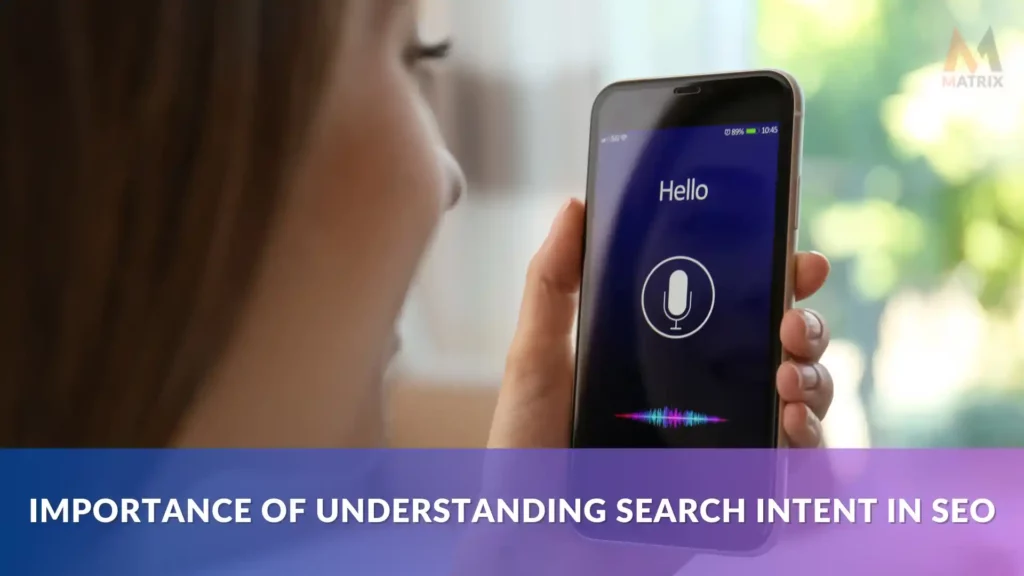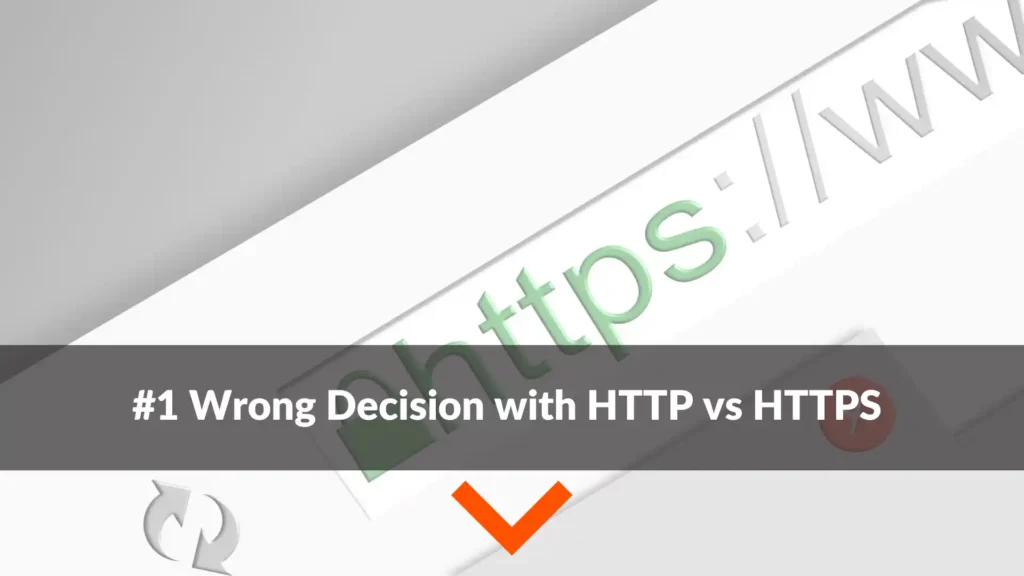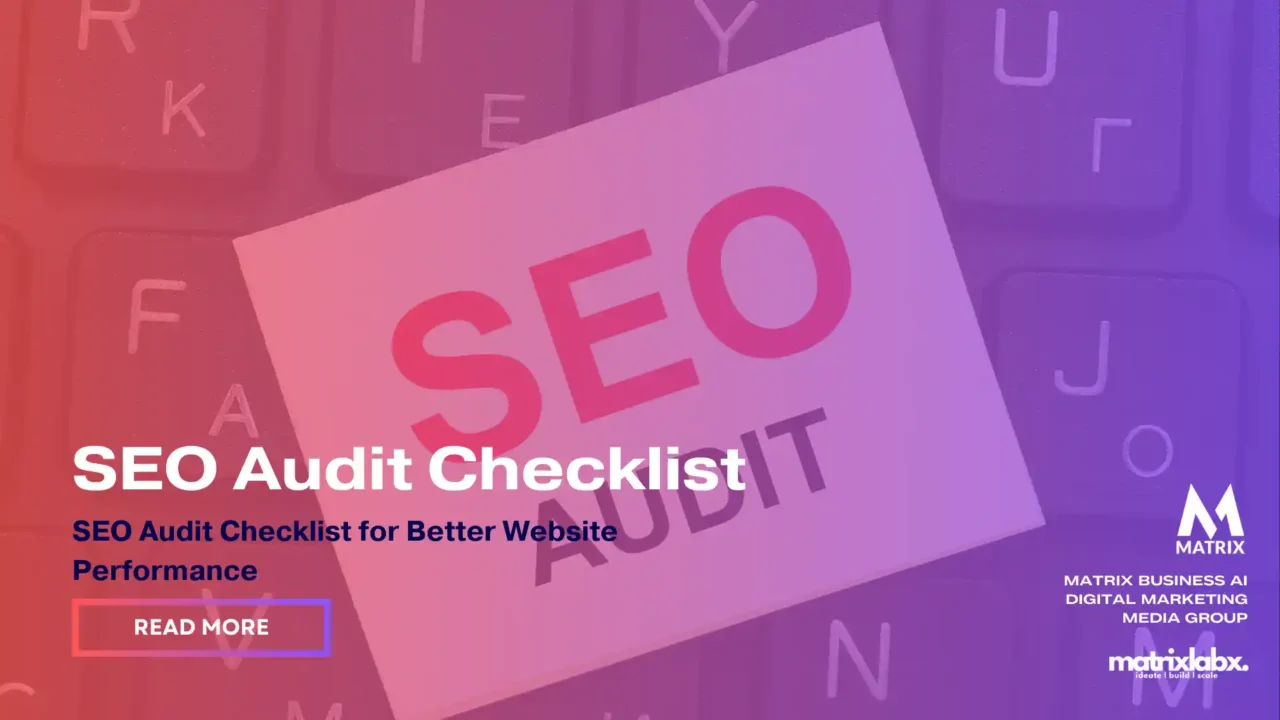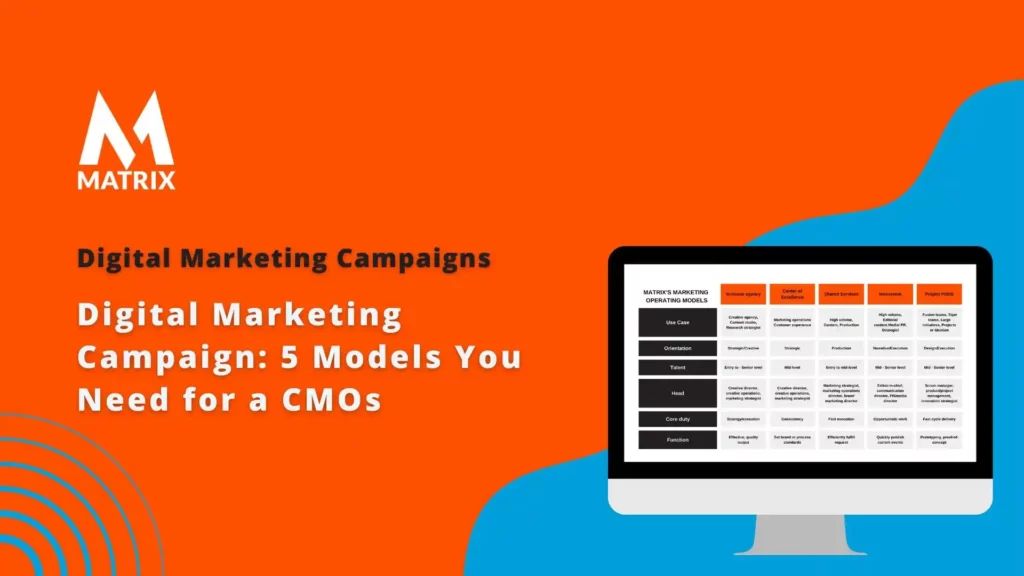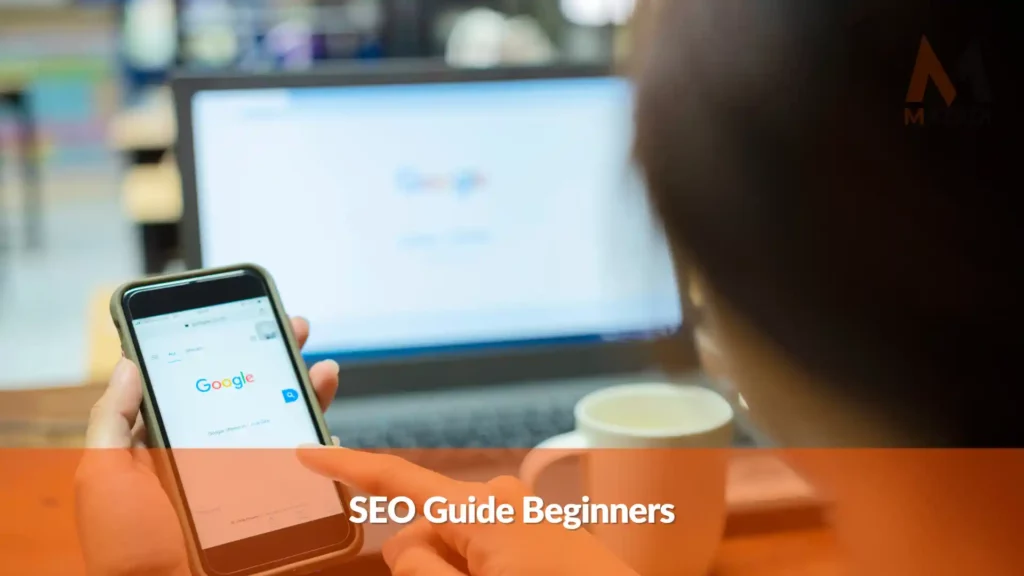Performance SEO Search Intent
Learn about Performance Search Intent and the Importance of Customer Alignment.
Meet Emily…
On Friday morning, Emily, the CMO, was taken aback as she opened her SEO dashboard at work.
Her heart sank as she gazed at the computer screen. Overwhelmed by the sudden 43% decline in site traffic, a woman who led a 12-person accounting services team realized that she needed professional assistance soon. More visitors to the website were essential for making sales, and she knew it too well.
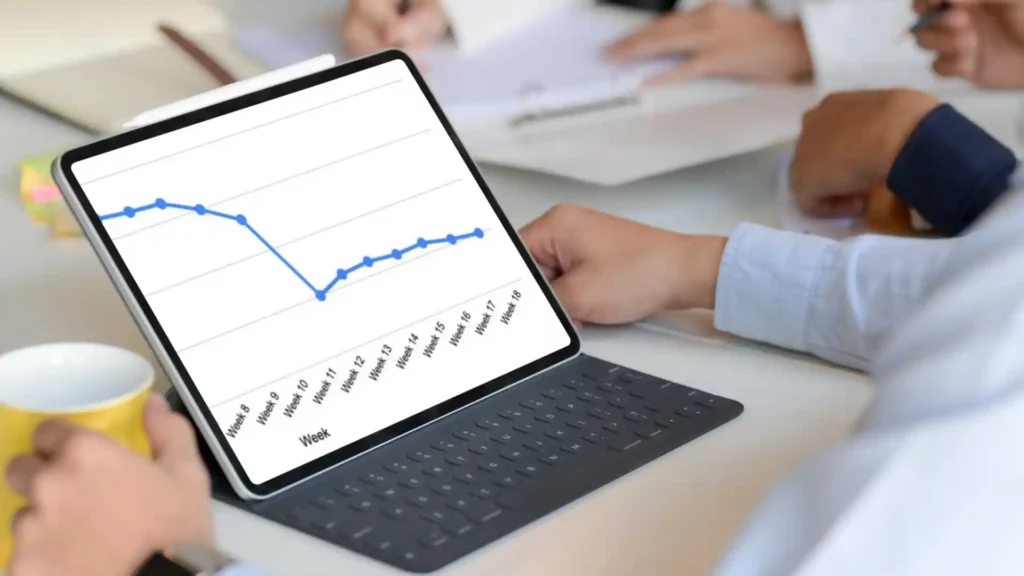
She called in the director of strategic marketing, Madison, to see what she thought. With Google GA4 open, they could see the errors, but they are very technical.
She suggested Matrix Marketing Group after meeting them at the Microsoft Ignite conference. She mentioned that AI-driven marketing had helped their clients. Emily said to call them.

She contacted Matrix Marketing Group, an experienced digital marketing agency specializing in SEO solutions.
After a quick call with one of their experts, they could identify what went wrong almost immediately – an issue with the website’s server caused it to crash for several hours during peak browsing time.
The understanding of local search intent and search intent keywords

The Matrix team implemented strategies designed specifically for Emily’s business needs, increased visibility across search engines, and optimized content so potential customers could find what they were looking for quickly and easily when searching online.
In a matter of days, Emily’s team witnessed a significant surge in user engagement through organic and paid channels. As a result, they were flooded with meaningful leads from qualified prospects looking for their top-notch accounting services!
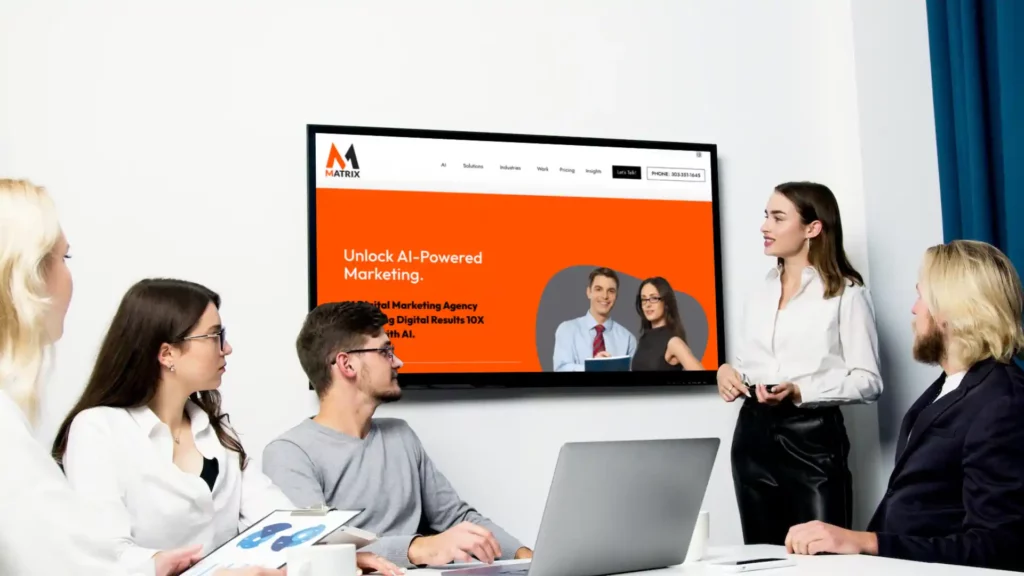
Emily is now enjoying higher levels of website traffic than ever before – all thanks to the quality support provided by Matrix Marketing Group!
She explored other marketing services and signed up for a marketing services bundle for 12 months.
CMOs (Chief Marketing Officers) oversee marketing strategies and efforts within a company. They care about performance SEO (Search Engine Optimization) and search intent because these factors significantly influence a company’s online visibility, reputation, and revenue.

AI Toolkit for Technology Companies
We’ve included a complete list of AI tools for technology firms, with over 800 free prompts and an AI Cheat Sheet to help you get started and leverage artificial intelligence faster.
AI Toolkit for Technology Companies
Here’s why:
- Visibility and Reach: SEO helps a website rank higher in search engine results. High-quality SEO efforts can improve a company’s visibility and reach potential customers. Understanding search intent — the reason behind a user’s specific search query — helps create content that meets the user’s needs and ranks well in search engine results.
- User Experience: Search intent is about understanding what information the user is seeking. Catching to this improves the overall user experience as users can easily find what they’re looking for on your site. A positive user experience can lead to higher engagement and conversion rates.
- Conversion and Sales: Performance SEO and understanding search intent are key to increasing website traffic. However, they are also essential for converting that traffic into leads and sales. By understanding what a user wants when they do a certain search, a company can provide content that guides the user along the sales funnel.
- Building Credibility and Authority: Effective SEO strategies considering search intent can establish a company as a thought leader or expert. This can improve the company’s reputation and make users more likely to trust the company, resulting in increased business.
- Cost-effectiveness: Compared to many other forms of marketing, SEO can be a very cost-effective strategy. It targets users actively looking for your products or services online, leading to more qualified leads.
- Competition: If a company’s competitors employ effective SEO strategies and focus on search intent, they may rank higher in search engine results and get more business. So, it’s important to focus on these areas to stay competitive.
- Insights and Analytics: SEO provides valuable data about potential customers, such as their search habits and preferences. This data can inform other areas of marketing and business strategy.
Given these reasons, it’s clear that performance SEO and search intent are crucial considerations for any CMO focused on promoting their company’s online presence and business success.
What is the Definition of Search Intent
Search Purpose, or User Intent or Query Intent, is the intended goal behind a user’s search query. It encompasses the underlying purpose that the user has in mind when they key in their search words into a search engine, and it is paramount to online businesses whose aim is to deliver user-centric and relevant content to the audience.
In other words, it is the reason behind the search, which may include seeking specific informational search intent, finding a particular website or webpage, purchasing a product or service, or comparing options before making a decision.
Understanding search goal is crucial for search engine optimization (SEO) as it helps create content that aligns with users’ needs, leading to higher satisfaction and improved rankings.
Importance Of Understanding Search Purpose In SEO
Determining search intent and optimizing for search intent is the only way to increase your conversions.
Performance search plan is vital for successful search engine optimization (SEO) for several reasons:
- User satisfaction: By aligning your content with the intent behind users’ queries, you can provide the information, solutions, or services they seek. This leads to a better user experience, higher satisfaction, and an increased likelihood of users returning to your website or recommending it to others.
- Improved search engine rankings: Search engines like Google aim to provide users with the most relevant and valuable results for their queries. Creating content matching search objectives increases your website’s chances of ranking higher on search engine results pages (SERPs). Higher rankings lead to increased visibility, more organic traffic, and better chances of reaching your target audience.
- Higher click-through rates (CTRs): When your content aligns with the search objective, it is more likely to have relevant and compelling titles and descriptions that encourage users to click on your search results. Higher CTRs signal to search engines that your content is valuable and relevant, which can contribute to improved rankings.
- Lower bounce rates: If your content meets users’ search purpose, they are likelier to stay on your website and explore further rather than bouncing back to the search results. A lower bounce rate indicates your content is engaging and valuable, which can positively impact your search rankings.
- Increased conversions: When your content addresses search purpose effectively, you’re more likely to convert visitors into customers, subscribers, or followers. By providing the information or services users seek, you can build trust and establish your website as an authoritative source to increase conversions.
- Long-term success: Continuously optimizing your content for search purpose keeps your website relevant and up-to-date with evolving user needs and search engine algorithms. This adaptability ensures the long-term success of your website, helping you maintain or improve your search rankings over time.
Understanding search goals is essential for SEO. It helps create user-centric content that meets users’ needs, resulting in a better user experience, improved search rankings, and increased visibility and conversions.
Role Of Search Purpose In User Satisfaction And Search Engine Rankings
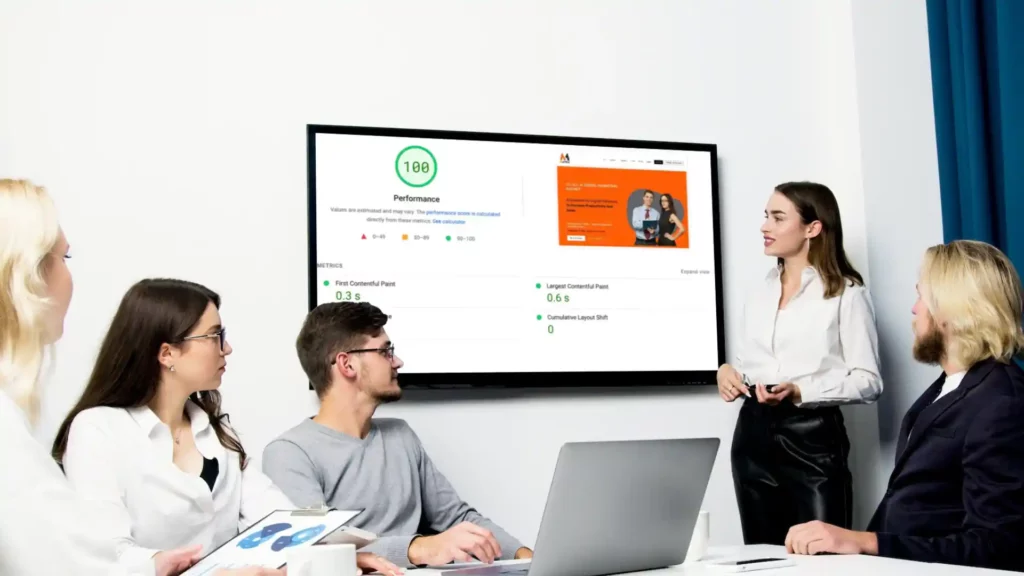
Search plan plays a significant role in user satisfaction and search engine rankings.
By understanding and catering to users’ search objectives, website owners and content creators can enhance the online experience and improve their site’s performance in search results.
User satisfaction:
- Meeting user expectations: When content aligns with the search goal, it fulfills the users’ expectations by providing the information, products, or services they seek. This leads to a positive experience, enhancing user satisfaction.
- Enhanced user engagement: Content that matches the search purpose is more likely to be engaging and relevant, encouraging users to spend more time on the website and explore other pages or resources.
- Establishing trust and authority: When your content consistently addresses search objectives, users trust your website as a reliable and authoritative source of information, products, or services.
Search engine rankings:
- Relevance and value: Search engines prioritize delivering users the most relevant and valuable content. When your content aligns with search goal, it signals to search engines that your website is a good match for users’ queries, leading to higher rankings.
- Click-through rates (CTRs): Content that meets search objective is likelier to have enticing titles and descriptions, resulting in higher CTRs. Search engines view high CTRs as an indicator of valuable content, which can contribute to improved rankings.
- Bounce rates: If your content caters to search purpose, users are less likely to bounce back to the search results. Lower bounce rates signal to search engines that your content is engaging and relevant, positively impacting your rankings.
- User signals and behavior: Search engines consider various user signals, such as time on site and pages per session, to determine the quality and relevance of your content. When your content meets search intention, it encourages positive user behavior, which can boost your search rankingSearchrch intent is crucial to user satisfaction by providing relevant, valuable, and engaging content that meets users’ needs. Simultaneously, it influences search engine rankings by sending positive signals to search engines, resulting in improved visibility and organic traffic.
Types Of Search Intent

There are four primary types of search intent, each representing different user goals when searching online. Search intent classification, and search intent data will get your prospects’ user search intent aligned for better conventions rates.
Understanding these types can help you create content that effectively addresses users’ needs and expectations.
- Informational intent: Users with informational intent seek knowledge or answers to specific questions. They may look for facts, explanations, instructions, or other educational content. Examples of informational queries include “How to change a tire,” “Symptoms of the flu,” or “History of the Eiffel Tower.” To cater to informational intent, create well-researched, comprehensive, and easy-to-understand content that answers users’ questions and provides valuable insights.
- Navigational intent: Navigational intent refers to searches where users want to find a specific website, page, or resource. These users often know the website they are looking for but use search engines as a shortcut to navigate directly to it. Examples of navigational queries include “YouTube login,” “Facebook homepage,” or “New York Times subscription.” To address navigational intent, ensure that your website is well-structured, easy to navigate, and has descriptive titles and meta descriptions that clarify what users will find on each page.
- Transactional intent: transactional search intent occurs when users want to perform a specific action or transaction, such as purchasing, booking a service, or signing up for a subscription. Examples of transactional queries include “buy iPhone 13,” “order pizza online,” or “book a hotel in Paris.” To optimize content for transactional intent, create clear and persuasive product or service descriptions, showcase customer reviews or testimonials, and make the purchasing or booking process seamless and user-friendly.
- Commercial investigation: commercial search intent involves users researching and comparing options before making a decision or transaction. They may look for product reviews, comparisons, or lists of the best products or services in a specific category. Examples of commercial investigation queries include “best laptops for gaming,” “top online yoga classes,” or “iPhone vs. Samsung.” To address commercial investigation intent, create content that provides unbiased comparisons, in-depth reviews, and expert recommendations that help users make informed decisions.
By understanding and catering to these different types of search goal, you can create content that effectively meets users’ needs, leading to higher user satisfaction, improved search engine rankings, and increased organic traffic.
Types Of Search Intention With Examples And How To Optimize For Each Type
Understanding and optimizing content for different types of search purpose can improve user satisfaction, search engine rankings, and organic traffic.
Below, we explore the four primary types of search goal, along with examples and optimization strategies for each:
Informational intent:
Examples:
“How to do an SEO audit,” “Symptoms of a Bad Website,” and “History of the Generative AI.”
Optimization strategies:
- Create well-researched, comprehensive, and easy-to-understand content that answers users’ questions.
- Use clear headings and subheadings to organize the content and make it easily scannable.
- Incorporate relevant keywords naturally into the content, headings, and meta descriptions.
- Use images, videos, or infographics to support and enhance the information.
- Link to authoritative sources to support your claims and improve credibility.
Examples: “YouTube login,” “Facebook homepage,” “New York Times subscription.”
Optimization strategies:
- Ensure that your website is well-structured and easy to navigate.
- Use descriptive titles and meta descriptions that communicate the content on each page.
- Optimize your site’s internal linking structure to help users find relevant pages easily.
- Claim and optimize your Google My Business listing for better local search visibility.
- Include relevant keywords in your URLs, titles, and meta descriptions.
Transactional intent:
Examples: “buy HubSpot CRM,” “order iPhone online,” and “book a meeting in Denver, CO with Matrix Marketing Group.”
Optimization strategies:
- Create clear and persuasive product or service descriptions highlighting key features and benefits.
- Showcase customer reviews or testimonials to build trust and credibility.
- Use high-quality images or videos to showcase your products or services.
- Make the purchasing or booking process seamless and user-friendly with clear calls-to-action (CTAs).
- Optimize your website for mobile devices to cater to users searching on the go.
Commercial investigation
Examples:
“best SEO tools of better ranking,” “Top AI digital marketing agencies,” and “WordPress vs. WIX.”
Optimization strategies:
- Create content that provides unbiased comparisons, in-depth reviews, and expert recommendations.
- Use lists, tables, or charts to help users easily compare options.
- Address common user concerns and questions to help them make informed decisions.
- Optimize your content with relevant keywords, including long-tail keywords specific to your niche.
- Encourage user-generated content, such as reviews or comments, to provide additional insights and perspectives.
By tailoring your content to each type of search purpose, you can effectively meet users’ needs and expectations, leading to higher user satisfaction, improved search engine rankings, and increased organic traffic.
Identifying Search Objective

Identifying search goal is crucial for creating content that meets users’ needs and expectations. Here are some methods to help you determine the search purpose behind keywords and queries:
Analyzing keywords and phrases:
- Types of keywords: Pay attention to the words and phrases used in the query, as they can provide clues about the user’s intent. For example, “how to” suggests informational intent, while “buy” or “order” indicates transactional intent.
- Long-tail keywords are longer, more specific keyword phrases that can reveal more about the user’s intent. For instance, “best noise-canceling headphones for travel” is a commercial investigation query, while “features of noise-canceling headphones” is informational.
Evaluating search engine results pages (SERPs):
- Analyzing search results: Look at the top-ranking pages for a given query to understand the search objective. If most results are informational articles, the intent is likely informational. The intent is likely transactional if they are product pages or e-commerce sites.
- Search engine features: Pay attention to the search engine features displayed for a query, such as featured snippets, “People also ask” boxes or shopping results. These features can help you identify the search plan and guide your content creation.
User behavior and search objective:
- Click-through rates (CTRs): High CTRs for specific types of content can indicate that users find those results relevant and valuable, suggesting that the content aligns with their search intention.
- Bounce rates: A high bounce rate for a particular type of content may indicate a mismatch between the content and the search intention. Evaluating bounce rates can help you identify the types of content that best align with users’ needs.
- Time on page: If users spend more time on certain pages, it may indicate that the content meets their search purpose, while shorter durations may suggest a need for content optimization.
- Conversion rates: High conversion rates for specific types of content can help you identify the search intention that aligns with users’ goals, such as making a purchase or signing up for a newsletter.
Using these methods to identify search purpose, you can effectively create and optimize your content to meet users’ needs and expectations. This, in turn, can lead to higher user satisfaction, improved search engine rankings, and increased organic traffic.
Steps to Optimize Content for Search Purpose
Optimizing content for search goal involves creating and structuring your content to align with users’ goals and expectations. Here are the steps to optimize your content for search purpose:
Research keywords and phrases:
- Identify relevant keywords and phrases that users will likely use when searching for content related to your topic.
- Analyze the search goal behind these keywords, considering factors such as the type of keyword and the content that currently ranks for those terms.
Craft relevant headlines and titles:
- Create compelling and descriptive headlines and titles that convey the content’s purpose and align with users’ search intention.
- Incorporate your target keywords naturally in the headlines and titles to improve search engine visibility.
Utilize appropriate formatting and structure:
- Organize your content with clear headings and subheadings to make it easily scannable and accessible.
- Use bullet points, numbered lists, tables, or charts to present information in an easily digestible format when appropriate.
- Break up long blocks of text with short paragraphs, images, or multimedia elements to maintain user engagement.
Incorporate keywords and phrases strategically:
- Use your target keywords and phrases throughout your content, including headings, subheadings, and body text.
- Avoid keyword stuffing, which can negatively impact user experience and search engine rankings.
Create high-quality, valuable content:
- Ensure your content is well-researched, accurate, and comprehensive, addressing users’ questions or concerns.
- Provide unique insights or perspectives to differentiate your content from existing resources.
- Use images, videos, or other multimedia elements to support and enhance your content when appropriate.
Ensure mobile-friendliness and fast page load times:
- Optimize your website and content for mobile devices, as many users search.
- Improve page load times by compressing images, using a content delivery network (CDN), and minimizing JavaScript and CSS files.
Optimize meta descriptions and URL structure:
- Write informative and engaging meta descriptions incorporating your target keywords and accurately describing your content.
- Use clean and descriptive URLs that include your target keywords and reflect your content’s structure.
Monitor content performance and user behavior:
- Use analytics tools to track user engagement metrics, such as click-through rates, bounce rates, and time on page.
- Analyze these metrics to identify areas for improvement and refine your content accordingly.
You can optimize your content for search purposes, improve user satisfaction, higher search engine rankings, and increase organic traffic.
Continuously monitor and refine your content based on user feedback and search engine algorithm updates to maintain relevance and effectiveness.
Monitor And Adjust Search Purpose Optimization
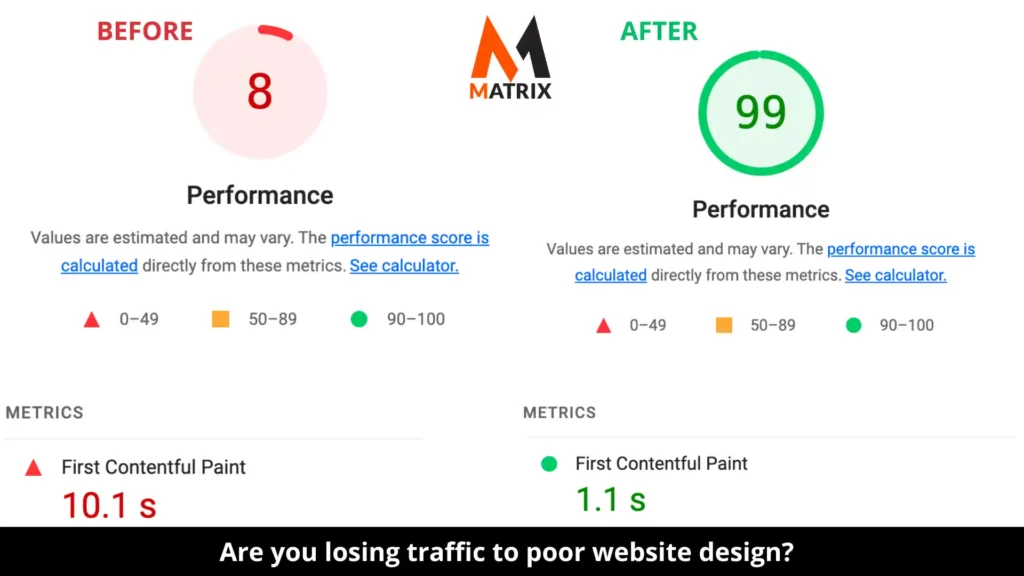
Monitoring and adjusting search purpose optimization is an ongoing process that involves tracking user engagement metrics, analyzing content performance, and refining your content accordingly. Here’s how you can effectively monitor and adjust your search intent optimization:
Set up analytics tools:
- Use analytics tools like Google Analytics, Google Search Console, or other third-party tools to track user behavior and content performance.
- Configure goal tracking to measure specific user actions, such as conversions, newsletter sign-ups, or other desired outcomes.
Track user engagement metrics:
- Monitor metrics such as click-through rates (CTRs), bounce rates, time on page, pages per session, and conversion rates.
- Analyze these metrics to identify patterns, trends, or potential issues with your content’s alignment with the search objective.
Analyze search engine rankings:
- Track your content’s search engine rankings for target keywords and phrases using tools like Google Search Console, Ahrefs, or SEMrush.
- Identify fluctuations in rankings and investigate potential causes, such as algorithm updates or changes in search goals.
Conduct regular content audits:
- Periodically review your content to ensure it remains relevant, accurate, and up-to-date.
- Identify content gaps or areas where you can add value by addressing additional user questions or concerns.
Adjust your content based on insights:
- Refine your content to align with the search goal by updating headlines, titles, meta descriptions, and URL structure.
- Improve your content’s quality, comprehensiveness, or depth to give users more value.
- Optimize your content’s format and structure to make it more engaging and accessible.
Test and iterate:
- Perform A/B testing on different content elements, such as headlines, images, or calls-to-action, to determine which versions are more effective in meeting search objectives.
- Implement the successful variations and continue testing to refine your content and optimization strategies.
Monitor industry trends and search engine updates:
- Stay informed about changes in your industry, target audience preferences, and emerging search trends to ensure your content remains relevant.
- Keep up1-to-date with search engine algorithm updates and adjust your optimization strategies accordingly.
By continuously monitoring and adjusting your search objective optimization, you can maintain the relevance and effectiveness of your content, leading to improved user satisfaction, higher search engine rankings, and increased organic traffic.
Conclusion

AI Toolkit for Technology Companies
We’ve included a complete list of AI tools for technology firms, with over 800 free prompts and an AI Cheat Sheet to help you get started and leverage artificial intelligence faster.
AI Toolkit for Technology Companies
In the end, Emily could rest assured that her website would have a 99.999% uptime.
And website maintenance paired with content marketing and SEO shows phenomenal results from Matrix Marketing Group’s AI SEO services.
General FAQs
Why is understanding search intent important for SEO?

Understanding search purpose is crucial for SEO because it allows you to create content that aligns with users’ needs and expectations, leading to higher user satisfaction and improved search engine rankings. By meeting search purpose, you can increase organic traffic, drive higher click-through rates (CTRs), and reduce bounce rates, contributing to better search visibility and overall website performance.
How does search intent impact user satisfaction?
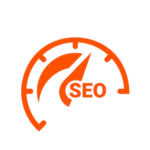
Search goal directly impacts user satisfaction by determining whether your content meets the user’s needs and expectations. When your content aligns with the search purpose, users can quickly find the information, products, or services they seek, leading to a positive experience. In contrast, content that does not meet search goals can result in user frustration, higher bounce rates, and reduced engagement.
Can optimizing for search purpose improve my website’s search engine rankings?

Yes, optimizing for search purposes can improve your website’s search engine rankings. Search engines prioritize delivering the most relevant and valuable content to users. When your content meets the search goals, it sends positive signals to search engines, such as high click-through and low bounce rates, indicating that your content is engaging and relevant. This, in turn, can contribute to higher rankings and increased organic traffic.
How can I optimize my content for different types of search intent?

To optimize your content for different types of search goals, identify the intent behind your target keywords by analyzing the search engine results pages (SERPs) and user behavior. Then, create content that addresses the specific needs associated with each type of search objective. For informational intent, provide comprehensive, well-researched answers to users’ questions. For navigational intent, ensure your website is easy to navigate and has clear titles and descriptions. For transactional intent, create persuasive product or service descriptions and streamline the purchasing process. For commercial investigation intent, offer unbiased comparisons, in-depth reviews, and expert recommendations to help users make informed decisions.

